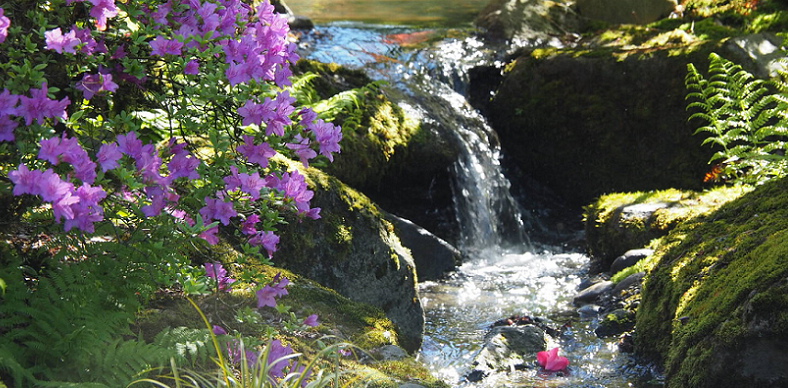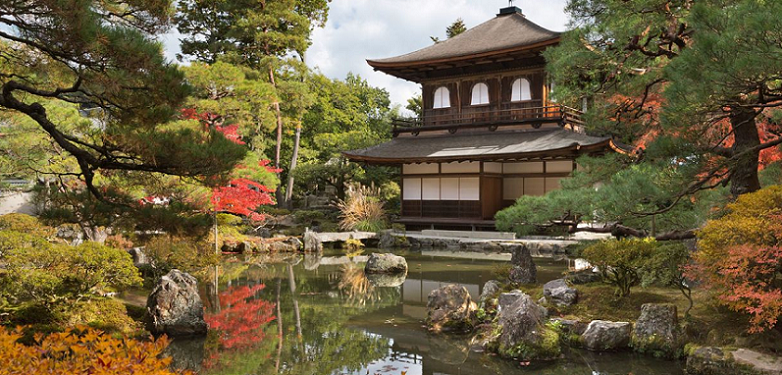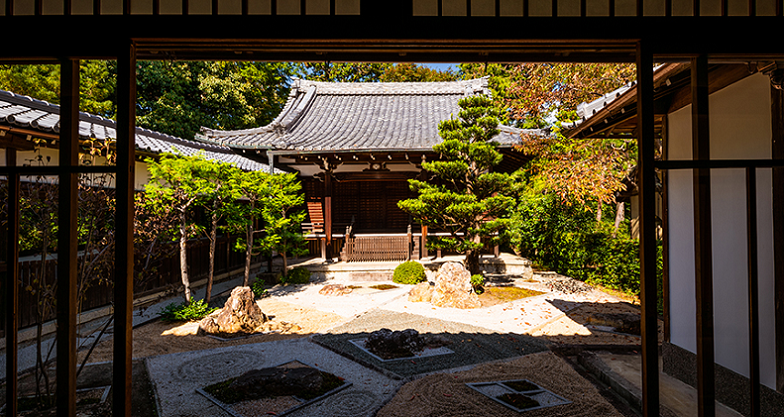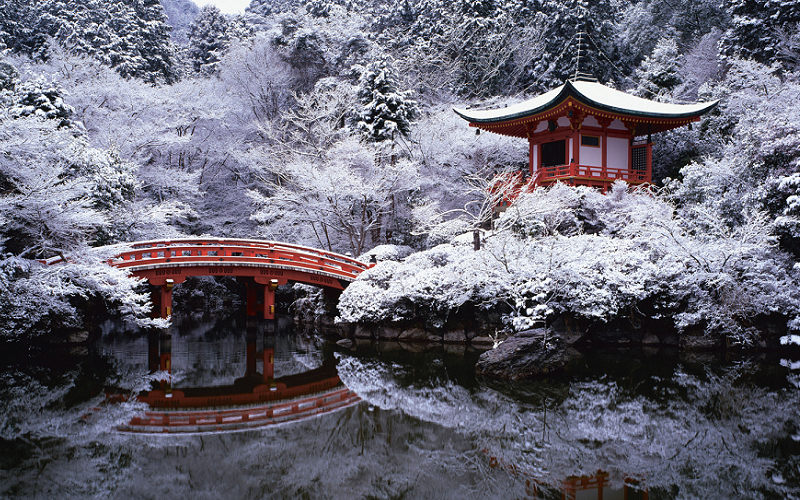Welcome to the world of Zen – a spiritual and philosophical practice that has had a profound impact on Japanese culture for centuries. At the heart of Zen are the serene temples and exquisite gardens that dot the Japanese landscape, serving as a living testament to the beauty and tranquility that Zen embodies. Here we explore Japan’s temples and gardens, and delve into the art of Zen as we discover the rich history that make these places so special.
What Is Zen in Japan?
Zen is a branch of Mahayana Buddhism that originated in China and was introduced to Japan in the 12th century. The word “Zen” is the Japanese pronunciation of the Chinese word “Chan,” which in turn is derived from the Sanskrit word “dhyana,” meaning meditation. Thus, Zen is fundamentally a practice of meditation, with the goal of achieving a state of enlightenment or “awakening” to one’s true nature.
At the heart of Zen practice is the concept of “zazen,” which is the act of sitting in meditation. In zazen, the practitioner sits in a specific posture, typically with legs crossed and hands resting in the lap, and focuses their attention on their breath or a specific object. The goal of zazen is to quiet the mind, let go of distracting thoughts, and simply be present in the moment.
Zen also emphasizes the importance of daily life and work as a form of practice. This concept is known as “soto,” or “everyday Zen.” The idea is that by bringing the mindfulness and presence cultivated in zazen into one’s daily activities, such as cooking, cleaning, or gardening, one can experience a sense of tranquility and connectedness with the world around them.
Zen has had a profound influence on Japanese culture, particularly in the areas of art, architecture, and gardening. Many of Japan’s most famous temples and gardens were designed with Zen principles in mind, emphasizing simplicity, harmony, and natural beauty. In fact, the practice of Zen gardening, known as “karesansui,” or dry landscape gardening, is a unique form of artistic expression that combines elements of Zen philosophy, landscape design, and the art of meditation.

Zen Temples in Japan
Zen temples are a type of Buddhist temple found throughout Japan that are dedicated to the practice of Zen meditation. These temples are known for their distinctive architecture, tranquil gardens, and rich cultural heritage. Here are some of the key features of Zen temples in Japan.
Historical Background of Zen Temples
Zen Buddhism originated in China and was brought to Japan in the 12th century by the monk Eisai. It quickly became popular among the samurai and other members of the aristocracy, who saw the practice of Zen as a way to cultivate discipline, focus, and a sense of inner calm. Zen temples soon sprang up throughout Japan, with many of them becoming centers of learning, art, and culture.
Different Types of Zen Temples
There are several different types of Zen temples in Japan, each with its own unique style and purpose. The most common types of Zen temples are the “soto” temples, which emphasize the practice of zazen meditation and are often located in rural areas, and the “rinzai” temples, which place more emphasis on koan study and are typically found in urban areas.
Famous Zen Temples in Japan
Some of the most famous Zen temples in Japan include Ryoanji Temple in Kyoto, which is known for its famous rock garden, Daitokuji Temple in Kyoto, which is home to several sub-temples and gardens, and Kenchoji Temple in Kamakura, which is one of the oldest and most important Zen temples in Japan. Each of these temples offers a unique glimpse into the history and practice of Zen Buddhism in Japan.
Features of Zen Temples
Zen temples are typically designed to promote a sense of peace, harmony, and tranquility. They are often characterized by simple, elegant architecture, with a focus on natural materials such as wood and stone. Many Zen temples also feature tranquil gardens, which are designed to promote mindfulness and contemplation. These gardens often include elements such as sand, rocks, water, and carefully placed plants, and are designed to be viewed from specific angles in order to create a sense of harmony and balance.

Zen Gardens in Japan
Zen gardens, also known as “karesansui” or “dry landscape” gardens, are a unique form of Japanese garden that reflect the principles of Zen philosophy. These gardens are characterized by their simplicity, elegance, and natural beauty, and are designed to promote mindfulness, contemplation, and a sense of harmony with the natural world. Here are some of the key features of Zen gardens in Japan.
- Historical background of Zen gardens: Zen gardens originated in Japan during the 14th century, and were initially created as an expression of the Zen philosophy of simplicity, austerity, and inner peace. They are characterized by a lack of water features and plants, instead relying on carefully arranged rocks, sand, and gravel to create a sense of balance and harmony.
- Different types of Zen gardens: There are several different types of Zen gardens in Japan, each with its own unique style and purpose. Some of the most common types of Zen gardens include the “kare-sansui” garden, which emphasizes the use of rocks, gravel, and sand to create a sense of harmony and balance, and the “tsukiyama” garden, which features a mix of rocks, plants, and water elements to create a more naturalistic setting.
- Famous Zen gardens in Japan: There are many famous Zen gardens in Japan, each with its own unique style and history. Some of the most famous include the Ryoanji Garden in Kyoto, which is known for its famous rock garden, the Adachi Museum Garden in Shimane, which is home to several beautifully landscaped gardens, and the Daisen-in Garden in Kyoto, which features a simple yet elegant arrangement of rocks and sand.
- Features of Zen gardens: Zen gardens are typically designed to promote a sense of peace, harmony, and tranquility. They often feature carefully arranged rocks, sand, and gravel, with patterns and shapes that are meant to evoke a sense of calm and balance. Many Zen gardens also include elements such as bridges, stepping stones, and viewing platforms, which are designed to encourage visitors to engage with the garden and experience its beauty from different perspectives.

Zen and Tea Ceremony
Zen and tea ceremony have a long and intertwined history in Japan. The tea ceremony, known as “chado” or “sado,” is a ritualized form of preparing and serving tea that dates back to the 16th century. It was developed by the tea master Sen no Rikyu, who saw the act of making tea as a way of practicing mindfulness, humility, and respect for others.
The tea ceremony is closely connected to Zen philosophy, with many of its principles and practices being rooted in the same traditions of mindfulness and presence. For example, the preparation of tea in the ceremony is a highly ritualized process that requires great attention to detail, patience, and focus. The act of serving tea to one’s guests is also a way of expressing gratitude and respect, with the host making every effort to ensure that their guests feel welcome and comfortable.
Many of the elements of the tea ceremony are designed to promote a sense of mindfulness and presence, such as the use of special utensils and decorations, the focus on the sound of water boiling and the aroma of the tea, and the simple, elegant setting of the tea room itself. The act of sharing a bowl of tea with one’s guests is also seen as a way of connecting on a deeper level, fostering a sense of harmony and respect for others.
How to Experience Zen in Japan
If you’re interested in experiencing Zen in Japan, there are several ways to do so. Here are some of the most popular:
One way to experience Zen in Japan is to participate in a meditation retreat at a Zen temple. Many temples throughout Japan offer retreats for both novice and experienced practitioners, allowing you to immerse yourself in the practice of zazen and other forms of Zen meditation. During your retreat, you’ll have the opportunity to learn from experienced teachers, experience the daily life of a Zen monastery, and deepen your own practice of meditation.
Another way to experience Zen in Japan is to stay at a Zen temple as a guest. Many Zen temples throughout Japan offer accommodations for travelers, providing a unique opportunity to experience the serene beauty of a temple firsthand. During your stay, you’ll have the chance to participate in daily meditation sessions, enjoy the temple’s tranquil gardens, and learn more about the history and practice of Zen Buddhism.
If you’re interested in the art of tea ceremony, you can experience Zen by attending a traditional tea ceremony in Japan. There are many tea houses and temples throughout Japan that offer tea ceremonies to visitors, providing an opportunity to experience the beauty and elegance of this ancient practice firsthand. During the ceremony, you’ll learn about the history and philosophy of tea ceremony, as well as the intricate steps involved in preparing and serving tea.
You can experience Zen in Japan simply by exploring the country’s temples, gardens, and cultural events. From the tranquil gardens of Kyoto to the bustling streets of Tokyo, Japan is full of opportunities to experience the beauty and serenity of Zen. Whether you’re attending a cultural festival, taking a garden walk, or simply enjoying the peaceful surroundings of a temple, there are countless ways to connect with the timeless traditions of Zen in Japan.

